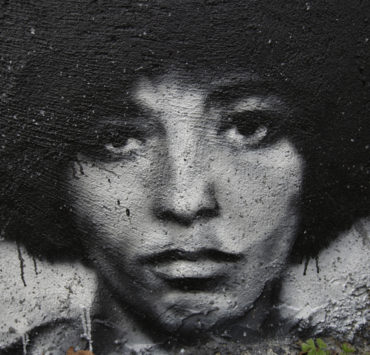
 At its most potent, the language in Xochiquetzal Candelaria’s Empire simultaneously welds comparisons and juxtapositions, interrogations and sometimes strange, often discomfiting, and always surprising imagery onto the psyche. Take the opening poem, one of the collection’s strongest, “Mexico, 1910” which begins:
At its most potent, the language in Xochiquetzal Candelaria’s Empire simultaneously welds comparisons and juxtapositions, interrogations and sometimes strange, often discomfiting, and always surprising imagery onto the psyche. Take the opening poem, one of the collection’s strongest, “Mexico, 1910” which begins:
A bullet comes later for Dolores,
after the war,
a shock of pain in her chest
as if thrown
from her horse,
a brown stallion I imagine,
grazing on a solitary hill
above Torreón.
From the title—which historically contextualizes the poem in the Mexican Revolution—to the first stanza—which immediately departs into an imagined future—the simile as if thrown / from her horse builds upon itself . Albeit riddled with unspoken questions, a narrative emerges,: who is this Dolores, whose name in Spanish means pain, anguish; who’s responsible for the bullet which comes later for Dolores and after the war; and what of this seemingly cogent though imagined stallion above Torreón? This eight-line stanza aptly illustrates Candelaria’s signature style: a direct, composed voice, even in temper, often sensuous and confident in its interrogative faculties mixing imagery with adept shifts in time signatures and particular attention to music. The second stanza continues in its detailed description of the horse:
On a night so clear
you can make out
the long muscles of his neck
as he chews,
his chewing marking time
for the city of embers
Dolores stokes
while the other women sleep.
The horse has taken on a life and it’s forgotten that the horse was first only imagined by the poet. Only? The imagination, too, takes on a life-force by the second stanza, qualified, certified, official. This sanctioned endorsement of the imagined runs throughout Empire as powerfully as its stories and proper nouns, the plant life and animals. By the fourth stanza, we learn that
I call her Dolores
after Our Lady of Many Sorrows,
not because of the Mauser at her side
or the many times she will use it
but because, as a child, she falls
in love with a goat
she calls Mother,
The reader has already invested in Dolores who stokes, Dolores who has a sister with a cartridge belt/the other firing, Dolores who will take a bullet. I call her Dolores, Candelaria reveals, confessing her invention, and with this confession Dolores elevates to possibly another Dolores, Mexico’s 1810 El Grito de Dolores, and while I hold that possibility, my attention turns to Dolores’s maternal love for the goat,
Its look as old as hunger
as it gnaws on a strip of hide
tied to a post, so bare
even the flies won’t land,
The simile and the action meld a new reality; even if one is unfamiliar with Mexico’s history, the pull to know Dolores, her horse, now her goat, compels us to feel what it is to be torn by violence, sacred connections and eventually, their leavings. And the questions of history hover. This poem prepares the reader for what to expect from Empire thereafter, not only in subject matter, as the title suggests, but in heated distillations, the turns and transformations relating to the power of language itself. The poet, obsessed with language’s dimensions, carefully weaves us into imaginary trails. A beautifully sensuous depiction comes in the rendering of “Sappho” grounded in a descriptive beginning:
Fragments—a line,
sometimes eight,
one scrap found stuffed in the mouth
of a mummified cat.
The poem then demands increased imaginal consent, “Let’s say we know this/as we know the cat/once roamed/lightfooted through a garden” until we arrive at a party, then “into the room of two women…”
…The young lover, who will leave by morning,
turns toward
the wall, offers only her hair,
a dark tangled nest
the aging women will remember
and later call, despite the absence of light
the evening star.
What kind of creature does this?
Reinvents the body despite the body’s rejection?
Yes, what kind of creature does this—enters the mind of the great poet, recreates the scene, becomes the witness to her muse and names it? Candelaria continuously assumes the power of re/inventing what could be perceived as overlooked or unconsidered memories. Just as powerful, the less straightforward poems, such as “Boom,” unravelling from the simile “I wake up as rabbits; nothing but fur / against fur, a rabbit in ruins, twin spire / of my ears eavesdropping on conversations,” extends itself, becomes persona poem—the boom itself—echoing vestiges of 9/11 for a full page, then returning to, “begotten like rabbits but never built.” Then, building on the past, a leap to another simile, “Once I became blind / as a bunny who nursed at the teat of my dog, Elsa…” The language uncoils itself, deftly returning to the animal’s bodily experience and new metaphor.
Throughout the collection, which is organized in three sections, Candelaria’s capacious hand blurs history and story with a subtle force: a subtlety enacted by dexterous line control which tends to embrace the phrase with a force gravitating toward original lyrical narratives, and a kind of lyrical riddles, which can unfold from a pronoun into well-crafted emotional experience. Crystallizing pronouns into steering wheels offers some of the collection’s poems unique lenses. Some first lines: “How I slip into it like a hot bath / his name at my feet, then thighs” (23); “St. Hildegard of Bingen might have a word for it” (43); “I threw it and it flew away./ It grew surly and phosphorous first,/ sobbed and wanted to know why.” (62). The poet is occupied with what happened before, before this and even before before, in the body, in the glance, before what was heard, to the eardrum, which perhaps made that something else happen, or maybe show how that something once existed or continues to live as a result. A powerful example in “Cortés and Cannon” begins
Before Cortés lops off a messenger’s
hands and has another trampled,
before the branding and the burning,
there is wonderment
and, for a moment, endearment
as Cortés dances, off beat, around
the long neck of the field piece.
The sounds and images enact the dance itself, fully realized and downright eerie as we are taken beyond encounter to confront annihilation as Cortés “speaks in a tongue of corkscrew/and wing, telling the Totonacs to bring/themselves closer.” The poet works language like the corkscrew to bring us to the edges of encounters, whatever they may be. The poem “The Loudspeaker” exemplifies this exposure, beginning, “In the Ogaden desert, they skim it from muddy water,/pour it over cactus meat, ululations crisp as morning birds.” Though the mind attributes “it” to the loudspeaker, as garnered from the title, it doesn’t easily fit. This is no ordinary loudspeaker. From the onset, despite its beautiful language, the poem creates discomfort. The confident narrator takes us to Oaxaca, Argentina via the loudspeaker, as the image wraps around itself, as images do in many of the poems, extending to become imagery, seamlessly playing with memory, entering us as we enter Candelaria’s language fields. The narrator becomes we and we enter the Loudspeaker to speak directly to it:
You are the last stranger,
little organ, little ear,
all your lorries loaded with air.
Here we are the spoils:
this breath a wilderness, broken date,
all wound, a wilderness of books becoming wind.
Here we turn like snake tails or great bridal veils
toward the untoward self,
reaching for our own pushing away (52, 53)
The loudspeaker morphs to little organ, little ear and comes into dialogue with the we, relates to it, admits to it, an admittance held in the prism of the preposition “toward.” The power of the ear, its being entered, cannot be ignored. A few pages earlier, the poem “On Language” springs from a “A blue pail left floating” and its narrator asks “Eyes and ears making women of all of us?” The question rises as one of Empire’s unifying elements. Later, in “Portrait of a Voice” the speaker states
Even though
I am blind
I catch each disturbance
of atmosphere, engineering
rhythmic disappearances,
one cloud canceling another
the squall made more
acute by my lack of skin. (56)
With this poem, the poet turns onto herself, exercising a thin narrative outline within a spacious visual field disclosing a poetics of conquest. We are all blind when reaching back in time, from a moment ago to millennia, but Candelaria’s Empire wrestles with elisions (at times metrical, often emotional), always reclaiming. Stated or unstated, the project of reclaiming brings questions (“Is there a solution in the passageway?”; “Is there something beyond the rise?”) propelling these poems. Reading Empire places us in conquest’s lap of memory (war, revolution, language, love) as Candelaria shares June Jordan’s preoccupation with seeing everyday life teetering on the edge of the cliff. Empire in Candelaria’s Empire becomes its own character with its own will, direct, mellifluous—signifying every conquest.

M.L. Vargas is a writer, educator and serves as poetry editor for Aster(ix) Journal. She was appointed poet in residence for the Montclair Art Museum (MAM) in 2014. Her work has appeared in various journals and anthologies, most recently The Lake Rises: poems to & for our bodies of water. She holds an MFA in poetry from Drew University and lives in New Jersey.







